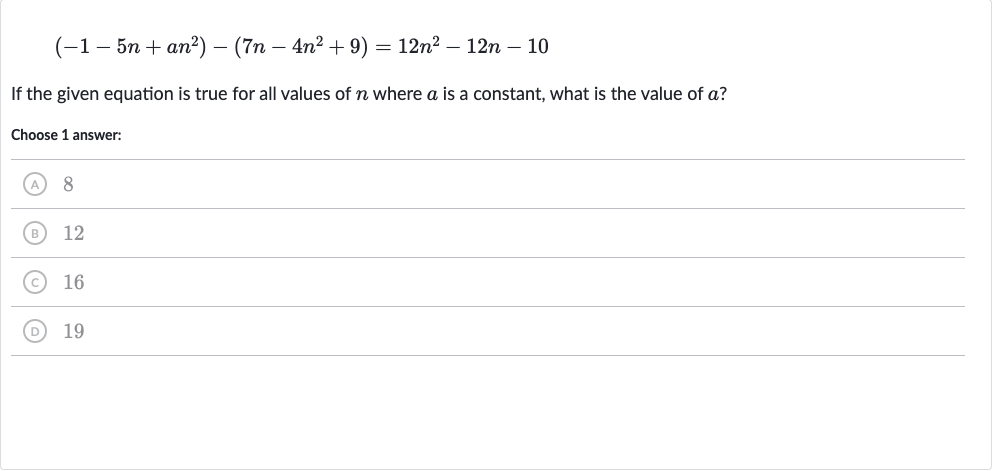Full solution
Q. If the given equation is true for all values of where is a constant, what is the value of ?Choose answer:(A) (B) (C) (D)
- Distribute and Combine Terms: First, let's distribute the negative sign in the second set of parentheses and combine like terms on the left side of the equation.
- Combine Like Terms: Now, let's combine the like terms.
- Compare Coefficients: Next, we will compare the coefficients of the corresponding powers of on both sides of the equation.Left side: Right side:
- Set Coefficients Equal: For the equation to be true for all values of , the coefficients of the corresponding powers of must be equal on both sides.So, we set the coefficients of , , and the constant terms equal to each other.
- Solve for : Since the coefficients of and the constant terms are already equal, we only need to solve for from the equation involving terms.
- Solve for : Since the coefficients of and the constant terms are already equal, we only need to solve for from the equation involving terms. Subtract from both sides to solve for .
More problems from Power rule
QuestionGet tutor help
QuestionGet tutor help
QuestionGet tutor help
QuestionGet tutor help
QuestionGet tutor help

